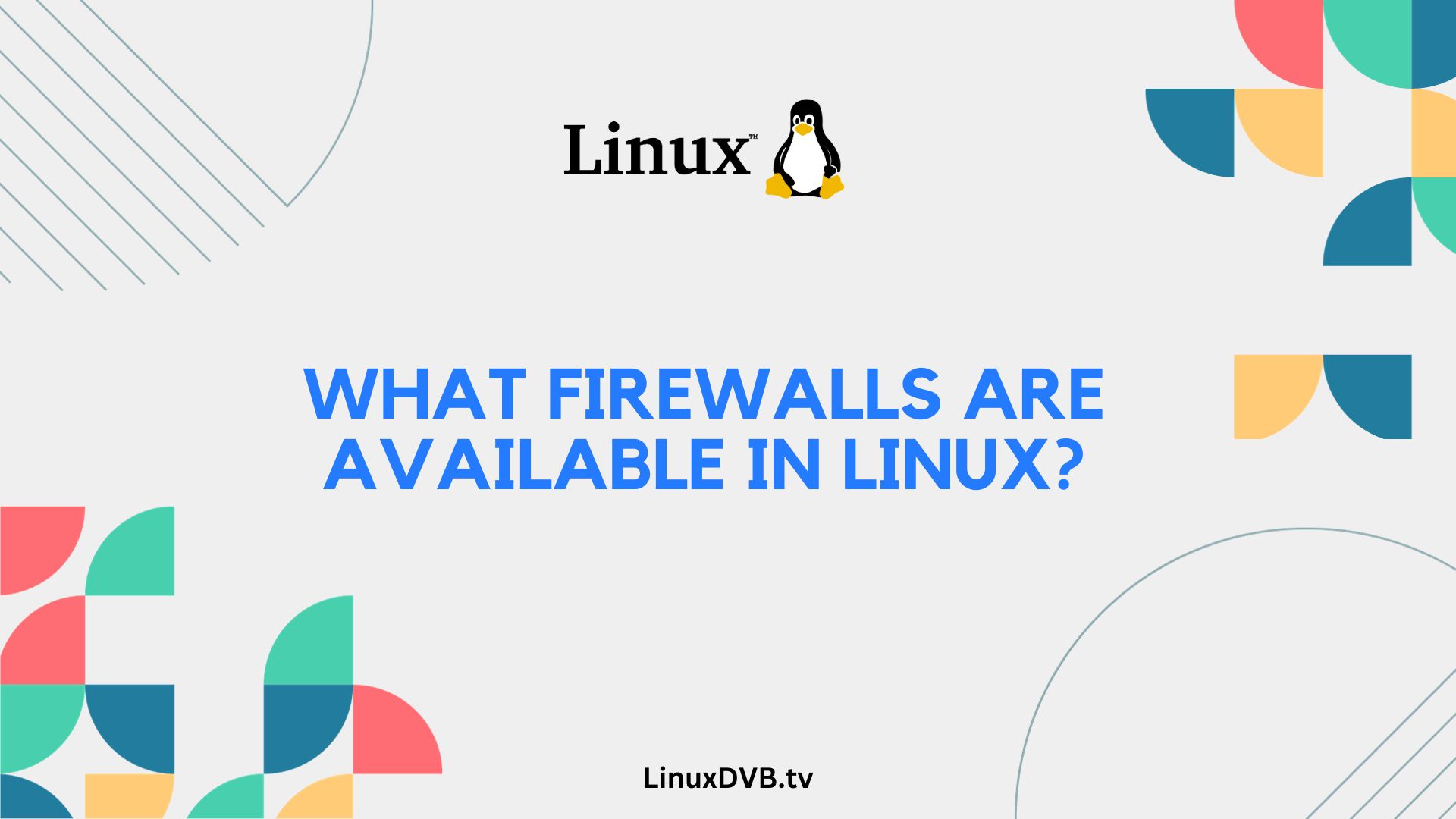Introduction
In the ever-evolving world of cybersecurity, choosing the right firewall for your Linux system is crucial. With an array of options available, it can be challenging to make an informed decision. In this guide, we’ll delve into the world of Linux firewalls, providing you with a comprehensive understanding of the choices at your disposal. From the basics to advanced configurations, we’ve got you covered.
Table of Contents
What Firewalls Are Available in Linux?
Firewalls are an integral part of any computer system, serving as the first line of defense against malicious threats from the internet. In the Linux ecosystem, several firewalls stand out for their effectiveness and versatility. Let’s explore them in detail:
1. iptables
- iptables is a traditional firewall tool that has been the go-to choice for Linux users for years.
- It offers granular control over network traffic through a rules-based system.
- Often used for simple configurations, it requires a good understanding of networking.
2. UFW (Uncomplicated Firewall)
- UFW is designed for ease of use, making it an excellent choice for beginners.
- It provides a user-friendly interface for configuring iptables rules.
- Ideal for quickly setting up basic firewall protection.
3. Firewalld
- Firewalld is a dynamic firewall management tool available in recent versions of Linux distributions.
- It simplifies firewall management by grouping rules into predefined zones.
- Allows real-time changes without disrupting existing connections.
4. nftables
- nftables is the modern successor to iptables, offering improved performance and flexibility.
- It supports both IPv4 and IPv6 and provides a more streamlined rule syntax.
- Becoming the standard firewall framework for many Linux distributions.
5. Shorewall
- Shorewall is a high-level firewall configuration tool that sits on top of iptables or nftables.
- Offers a configuration file-based approach for creating complex firewall rules.
- Suitable for advanced users requiring intricate setups.
6. pfSense
- Although primarily designed for use as a router and firewall on dedicated hardware, pfSense can also be installed on Linux servers.
- Offers an array of advanced features, making it a robust choice for network security.
Now that we’ve covered the primary Linux firewalls, let’s address some common questions.
FAQs
Can I use multiple firewalls simultaneously on a Linux system?
While it’s possible, it’s not recommended as it can lead to conflicts and decreased performance. It’s best to choose one firewall that suits your needs.
Are there graphical interfaces available for configuring iptables or nftables?
Yes, there are several graphical front-ends, such as “gufw” for UFW, that make configuring iptables or nftables more user-friendly.
Which firewall is the most secure option for a Linux server?
Security depends on proper configuration rather than the firewall itself. iptables, nftables, or Firewalld can all be secure when configured correctly.
Can I use Linux firewalls in a cloud environment like AWS or Azure?
Yes, Linux firewalls can be used in cloud environments to control inbound and outbound traffic, enhancing your cloud server’s security.
Do I need a firewall on my personal Linux desktop computer?
While Linux is generally considered more secure than some other operating systems, a firewall can still provide an extra layer of protection, especially if you connect to public networks.
Are there any Linux firewalls specifically designed for IoT devices?
Yes, there are Linux-based firewall solutions tailored for IoT devices, such as iptables and nftables, which can be configured to suit IoT needs.
What firewalls are available in Linux?
Linux offers several firewall options, including iptables, nftables, and firewalld.What is the most used Linux firewall?
Iptables has traditionally been one of the most widely used Linux firewalls, but nftables is gaining popularity as its successor.Is Linux firewall free?
Yes, Linux firewalls like iptables, nftables, and firewalld are open-source and free to use.Conclusion
In the realm of Linux firewalls, you have a variety of options to choose from, each catering to different needs and expertise levels. Whether you’re a beginner looking for simplicity or an advanced user seeking fine-grained control, there’s a Linux firewall solution for you. Make sure to configure your chosen firewall properly to maximize security and protect your Linux system effectively.

